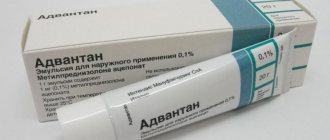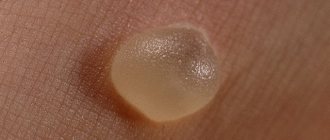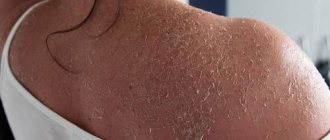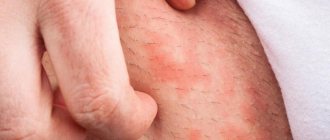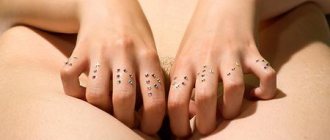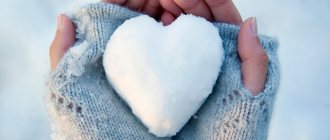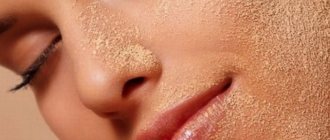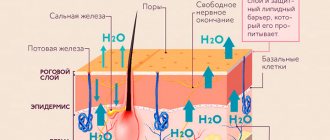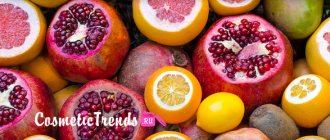The skin on the elbows is peeling: reasons
Peeling is the rejection of dead epidermal cells. Dry or oily scales soaked in sebaceous secretions form on the surface of the dermis. The elbow may be itchy and red or not cause physical discomfort.
The development of a pathological condition is facilitated by one or a complex of factors:
- Health problems. Excessive rejection of the stratum corneum can be a sign of dermatological diseases and disorders of the endocrine system.
- Poor hygiene. Abuse of hot baths, scrubs, and the use of creams and low-quality oils disrupts the natural water balance of the epidermis.
- Poor nutrition. With a lack of certain elements, in particular vitamins A, E, B, the dermis becomes dry.
- Impaired hydration. Improper care, age-related changes, and hormonal imbalances disrupt the functioning of the sebaceous glands and lipid metabolism of the epidermis. The skin begins to peel off, and a feeling of tightness appears in the elbow area.
The problem occurs in both men and women of any age.
Peeling in men
The dermis on the elbows is much denser and drier than on other parts of the body, and few men take the time to properly care for it. And, in vain, this area has practically no sebaceous glands, and due to the large number of folds, the dermis is mechanically injured. Most of the causes of peeling skin on the elbows in men are the same as in women. But the stronger sex often does not pay attention to the pathological condition and is in no hurry to take action.
Be sure to read:
Is skin eczema contagious to others?
In men, the appearance of scales is more often due to the following factors:
- Physical exercise. During exercise in the gym or physical labor, the arms are constantly bent and unbent, and the dermis cracks from such actions.
- Exposure to chemical components. Chlorine is added to swimming pools as a disinfectant. The aggressive substance disrupts the natural water balance of the dermis, causing irritation and itching.
- Psoriasis . The dermatological disease is characterized by the appearance of papules covered with silvery scales on the flexor limbs.
- Taking steroids causes an imbalance of hormones, which leads to slower sebum production.
- Drinking alcohol, smoking. Nicotine and alcohol undermine the functioning of all organs and systems, and accordingly, worsen the functioning of the dermis.
An unpleasant symptom can only be eliminated by identifying the cause. Since there are many factors that cause peeling, it is better to seek help from a doctor.
Peeling in women
The appearance of elements of skin rashes in the form of scales on the flexor surfaces of the hands in women, as well as in men, is due to an insufficient level of hydration of the epidermis.
Peeling can occur for various reasons:
- Natural hormonal changes. An unpleasant symptom can occur during pregnancy, after childbirth, and during menopause.
- Abuse of diets. An imbalance in the diet, mono-diets, and frequent fasting days lead to a deficiency of vitamins D, A, E and amino acids.
- Frequent peelings. If a woman uses scrubs more than 3 times, the lipid film is deformed and the protective barrier of the dermis is reduced. The skin is less resistant to the effects of toxins and allergens of pathogenic flora.
- Chronic pathologies: diabetes, psoriasis, anemia.
The symptom can also be a consequence of stress, allergies, sunburn, or exposure to cold.
Causes of the disease
Allergic dermatitis on the elbow
Rough skin on the elbows or knees can occur in older people. This is due to a slowdown in natural regeneration processes and minimal collagen production. For young people, this is a signal from the body that the skin is suffering from the effects of pathogenic pathogens that can cause scaly lichen, fungal seborrhea
or dermatitis.
Various types of fungal inflammation of the skin can affect the epidermis on the elbows and knees. The main causes of mycosis in these areas:
- injury to the skin in any way;
- damage due to psoriasis or eczema;
- rubbing with a rough cloth;
- occupational injuries.
Squamous lichen on the elbow
Often office workers who spend a lot of time at the desk, resting their hands on the elbow when writing, complain about the problem of fungus on the elbows. The skin has invisible microcracks, and pathogenic fungi easily penetrate under the upper layer of the dermis, causing severe peeling and the appearance of painful crusts.
Mycosis on the elbows or knees can be provoked by harmful fungi that make up the natural microflora of humans. At any age, they are present on the mucous membranes of the nose or mouth, on the scalp or in the intestines. In a laboratory test, analysis may show:
- candida fungi
; - dermatophytes;
- epidermophytons;
- rare subspecies of Malassezia.
It is easy to encounter such harmful fungi when visiting the locker room in a sports club, swimming pool or sauna. They are transmitted through household items, towels or bed linen, shared shoes or clothing.
The people were taken aback! Joints will recover in 3 days! Attach...
Few people know, but this is exactly what heals joints in 7 days!
Why do elbows peel: what diseases is it associated with?
If the problem worsens, it is necessary to consult a doctor as soon as possible, since peeling can be a clinical manifestation of a number of serious diseases:
- Chronic trichophytosis is a fungal infection characterized by the presence of gray scales on the elbows, forearms, thighs, and face.
- Hypovitaminosis A is a deficiency of retinol (vitamin A). The pathology is manifested by roughness of the flexor surfaces of the arms and legs, and the appearance of small-plate scales.
- Psoriasis is a non-contagious dermatological disease in which silvery-white scales are observed on the elbows, knees, torso and head.
- Eczema is a dermatitis of an allergic nature.
Be sure to read:
How errors in diet affect the skin, prevention of skin diseases
Less commonly, roughness of the skin in the elbow area is observed in diabetes mellitus and hypothyroidism.
Common dermatological problems and causes
The skin protects the entire body, affects the process of thermoregulation and metabolism. Different skin problems are localized in different parts of the body. You need to understand that many skin diseases go away with almost no symptoms and can be easily gotten rid of.
Exogenous factors include those that affect the body from the outside. All these reasons can be divided into several types:
- mechanical influence;
- influence from temperature changes;
- chemical exposure;
- exposure to bacteria and parasites.
For example, mechanical damage occurs due to friction of the skin with any materials. For this reason, dermatitis or hemorrhages often appear. Thermal injuries occur due to excessive exposure of the skin to low or high temperatures. Dermatoses appear as a result of chemicals. For example, this happens in adults who are forced to work with chemicals (doctors, technologists). Pyoderma, skin tuberculosis, leprosy are often due to harmful bacteria.
Skin problems are often due to endogenous causes. The functioning of the endocrine glands may change or excessive pigmentation may appear. Dermatological diseases can also be caused by problems in the central or peripheral nervous system.
Common skin diseases:
- Acne – among skin diseases, this problem occupies a leading position. Most often it occurs in adolescence. But in the absence of proper care, it can develop into a chronic form.
- Eczema and atopic dermatitis often occur in children. They suffer from severe itching. A common cause of this disease is an allergic reaction of the body.
- Herpes – There are different forms, but the most common form is herpes simplex.
Goose bumps in the elbow area: causes
In medicine, “goose bumps” is called follicular hyperkeratosis. This is dermatitis, characterized by increased growth of the stratum corneum and impaired exfoliation of epidermal cells. The pathology develops due to blockage of the follicle ducts by scales.
The main reasons for the development of the disease are:
- Hypovitaminosis A. The skin on the extensor surfaces of the arms and legs becomes rough, fat-free, and resembles sandpaper.
- Vitamin C deficiency. The follicles are clogged with blood, in addition to the elbows, the hips and abdominal area are affected.
- Hereditary predisposition.
- Frequent hypothermia leads to disruption of thermoregulation. Frequent sharp releases of hormones that stimulate the protective functions of the dermis gradually lead to a deterioration of local immunity.
Follicular hyperkeratosis can also develop against the background of allergization of the body.
Reviews
Leah: I really liked rubbing my elbows with lemon juice - natural and effective! The most important thing is not to forget to apply cream afterwards!
Karina: Baths seemed like too much of a hassle to me. At one time the result is minimal, but I don’t want to do this for two weeks.
Sveta: Dark skin on the elbows is simply poorly exfoliated, so the best solution is a scrub. The honey-coffee mixture gives simply excellent results.
Olya: My elbows turned black due to vitamin deficiency, I started taking vitamins and everything gradually went away by itself. I didn’t take any additional measures, although I systematically scrub my entire body, maybe this had some significance.
Why does the skin on the elbows become darker and turn black?
Dark elbows very rarely indicate sloppiness.
This is a pathological condition caused by various diseases:
- Hypochromic anemia is a lack of iron in the body, leading to disruption of the hemoglobin structure and oxygen starvation of tissues. Clots in capillaries and arterioles give the epidermis a characteristic dark hue.
- Dermal dystrophy is heterogeneous changes in the layers of the epidermis, leading to transformation of its layers.
- Hyperpigmentation is intense coloring of certain areas of the dermis. The pathological process can be caused by hormonal imbalance during pregnancy, menopause, and gastrointestinal diseases.
The symptom is serious and requires immediate therapeutic measures. If left untreated, severe complications develop.
Folk remedies for dry elbows
Traditional medicine is an indispensable assistant in solving many problems. For example, I try to use her recipes to the maximum. She has helped me out more than once, and this time she did not let me down.
So, what does she suggest for treating dry elbow skin:
- To lighten dark skin on your elbows, use fresh lemon or grapefruit juice, rice broth, or sauerkraut juice . To do this, soak a cotton pad in any of the above liquids and apply to your elbows for 15-20 minutes. Kefir or sour cream, or a leaf of white cabbage are also perfect.
How to get rid of dry elbows: 5 best remedies
If peeling is not a consequence of any pathology, then you can get rid of the problem at home. The affected dermis needs to be moisturized, provided with nutrition, and normal rejection of the stratum corneum.
For these purposes, it is necessary to use different means:
- Treatment of affected areas with natural oils: corn, castor, olive. Rub the oils into the rough area using massaging movements. The procedure is performed daily until the condition improves.
- Home peeling. Mix a tablespoon of ground coffee beans and honey. Mix thoroughly, apply the composition to previously steamed elbows.
- Nourishing mask. Raw carrots are passed through a meat grinder. Carrot puree is mixed with olive oil in equal parts, add 0.5 tsp. lemon juice. The resulting mass is applied to the affected area for half an hour and washed off with warm water.
- Baths . Mix according to Art. l. chamomile and calendula, pour hot water. Dip your elbows into the strained warm solution and keep for 20-30 minutes.
- Lotions . Boiled potatoes are ground into puree. Mix equal parts puree and olive or corn oil. The mixture is applied to the affected areas, wrapped in film and wrapped.
Be sure to read:
Methods for treating streptoderma in adults at home
All procedures are pre-coordinated with the doctor.
What to do
The first thing you need to do if peeling appears is to consult a doctor: first to a therapist, then to an endocrinologist, gastroenterologist or even a gynecologist. Only through a series of diagnostic procedures and a complete history can the exact cause of dry elbows be established. If these are internal problems of the body, adequate medical care will be needed. Only by eliminating the root of the problem can you get rid of the symptoms.
If the reason why the elbows are very peeling has not been established by doctors, you need to take a more careful approach to drawing up the menu. The diet should be enriched with foods rich in vitamins, healthy fats and amino acids. For greater confidence, you should take vitamin supplements, which will contain beneficial substances of groups A, B, PP, E. In addition, you should make it a habit to carry out pleasant procedures for caring for the skin of your elbows at least once a week.
- How to drink rum correctly and what to eat
- Ham salad: delicious recipes
- How to properly cook fish in the oven
Nourishing masks
Special homemade hand masks will help nourish the epidermis, externally saturate the skin with vitamins, cure dermatitis and make elbows softer. Try making a moisturizer from carrots. It will give firmness and elasticity to the skin, saturate it with vitamin A and help heal cracks or wounds on the elbow joint:
- Grate half a raw carrot.
- Mix it with 1 tablespoon of olive oil.
- Take two cotton pads and carefully place the resulting mixture in the center.
- Apply the swabs to your elbows and secure with a bandage.
- After half an hour, rinse off any remaining product with warm water.
- To achieve maximum effect, you can take carrots internally.
If you don’t have much time to tinker with the recipe, you can try preparing a simple mask with ascorbic acid based on orange:
- To do this, lightly heat castor or olive oil in a small bowl.
- Add 1 teaspoon of freshly squeezed orange juice to the container.
- Pour the crushed ascorbic acid tablet into the container and mix.
- Using massage movements with your fingers, apply the resulting mixture to your elbows.
- Leave the product on for about 5 minutes and then rinse off.
Ointments and creams
During periods of exacerbation of cold weather, when the skin of the elbows is especially susceptible to peeling, and there is a lack of vitamins in the body, you can nourish your hands with simple pharmaceutical products. Make it a habit to lubricate your elbow joints with baby cream, unscented fatty ointment, or other moisturizers after each bath or shower.
If symptoms from internal diseases intensify, the doctor will give a recommendation: apply medicinal ointments or anti-inflammatory balms to the elbows. The following will help to cope with dermatitis, rashes and prevent the occurrence of cracks on the elbows:
- Lipikar;
- Atoderm;
- Radevit;
- Pitival;
- Salicylic ointment.
All of the above products should be applied to cleansed hands, in a thin layer once or twice a day. If persistent positive results are obtained, the use of pharmaceutical products can be suspended. When peeling of the skin is accompanied by a rough thickening of the upper skin, before applying the products, the elbows should be cleaned with a scrub or special exfoliating preparations should be used.
Folk remedies
Healing nettle baths will help make the skin on your elbows beautiful, elastic and smooth. This bath procedure stimulates metabolic processes, treats small cracks, promotes wound healing, and relieves redness in the affected area. To prepare the bath:
- Take 300 grams of dried nettle leaves.
- Pour the raw material with 1 liter of boiling water and let it brew for 15-20 minutes.
- There is no need to strain the solution; immediately pour the tincture into a small bowl and lower your arms bent at the elbows to the bottom.
- Leave the bath for at least 15 minutes.
- After the procedure, dry your skin and apply moisturizer to your joints.
Olive oil baths soften the skin, remove flaking and make elbows smooth:
- Heat 6 tbsp in a steam bath. l. oils
- Divide the mixture into two portions and divide into saucers.
- Soak your elbows in the oil for 5-10 minutes.
- Rub the softened skin with a soft pumice stone, then rinse off any remaining product with water and baby soap.
- Lubricate your elbows with nourishing cream.
To reduce redness, irritation and rashes on the skin, lemon juice, rice broth, and sauerkraut have long been used. These ingredients are considered natural brighteners. To eliminate peeling at home, you can make compresses on the elbows from sour cream or green tea, lubricate problem areas with honey, make decoctions of dry elecampane, chamomile and other herbs. The following oils will help quickly soften the skin on your elbows: sea buckthorn, buckwheat, almond.
Treatment of peeling elbows with medications
Pharmacotherapy is prescribed by the doctor.
Drugs are selected individually depending on the pathology and clinical manifestations:
- For dermatitis and allergies, use Akriderm and Ekolom ointments.
- Dexpanthenol and Bepanten are used to relieve inflammation and stimulate regeneration processes.
- Dermatotropic agents normalize keratinization processes, relieve itching, and moisturize the epidermis: Radevit ointment, Emolium cream.
- Glucocorticosteroids eliminate itching, horny deposits, allergy symptoms, soften the dermis: Rederm, Belosalik, Afloderm.
Corticosteroids are used with caution; if side symptoms appear, consult a doctor immediately.
Dermatitis and eczema - difference from fungal infections of the skin
Dermatitis is a form of skin diseases of a non-infectious nature. Skin dermatitis is similar in its manifestations to mycosis. The skin appears reddened and may experience itching and rashes. Skin dermatitis is not contagious. This is an acquired disease, the occurrence of which is associated with exposure to an allergen. Dermatitis can quickly be treated with antihistamines, the redness and rash formed on the elbows under the influence of the allergen disappear.
Eczema is characterized by profuse rashes, itching and flaking. Pustules and blisters appear on the elbows, which burst on their own and form a crust. Eczema is a chronic disease. Exposure to an allergen causes a new attack of the disease.

